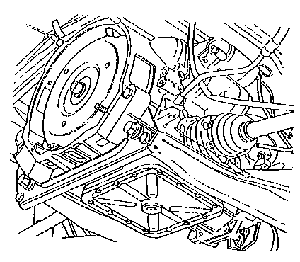The
system
In place of the four forward speeds of the standard manual
transmission with clutch pedal, the Semi-Auto allows the driver
to work a clutch pedal, and in each drive range you have available
a wider range of speed than the single gear in the manual
transmission would have provide.Since only occasional changes
from one range to another are required, the drive is like
heaven!
With the
Semi-Auto you operate the hand level only about a tenth as
often as you would have to shift gears in a car with a manual
transmission.
So what are you waiting for?
Run out and fine one, and let us know about your new car!

The way it's work
A 3-speed gearbox of conventional design, a clutch of conventional
design and a torque converter are all married together.Gears
are changed by a conventional gear lever.The gear lever, however,is
connected to the clutch in such a way that soon as the lever
is moved longitudinally(i.e in gear selection direction) the
clutch disengages.
The torque converter operates to transmit power when the engine
is turning above idling speed and so therefore acts as a moving
off clutch.It also acts as a form of `slip` between engine
and gear-In other words when engine load is higher-such as
when moving from rest or uphill-the engine speed can increase
to impart more power even though the vehicle remains in the
same gear at the same speed.This enables the same as 2nd,3rd
and top of a conventional 4 speed manual gearbox.
If the torque converter is called upon to 'slip' too mutch
- for example when driving up a long hill in top gear, the
oil will overheat.When this happens a temperature sensitive
warning light on the dashboard lights up and indicates that
a lower gear should be selected. Lowest gear is adequate for
all normal conditions and no warning light for the low range
is installed.

The operation
of the clutch is pneumatic via a control valve and servo.Vacuum
is draw from the engine intake manifold and there is also
a vacuum tank.The control valve is fitted on the left side
of the engine compartment and the vacuum tank under the left
rear wing.The vacuum control valve is actuated by a solenoid
switch and in turn is actuated by a special switch incorporated
in the gear lever base.As soon as the gear lever is moved
forward or backwards the switch contacts close,and the solenoid
operates.In addition there is a second switch.This acts as
a starter inhibitor witch avoids the engine being started
with a gear engaged.It also prevents the clutch from engaging
again during the brief period of lateral movement of the lever
from one range to another through neutral.
The control valve also incorporates a device to regulate the
speed with which the clutch engages.In accelerating circumstances
(throttle open)the operation of the servo is quicker than
would be possible whit a foot pedal change.In decelerating
conditions(throttle closed)the control valve controls the
servo to operate less quickly.This enables the clutch to re-engage
smoothly an without snatch
Oil for the torque converter is circulated by a pump from
the converter and through a reservoir tank which is mounted
under the right rear wing.The pump is fitted on the end of
the engine oil pump shaft.This oil circulation serves to cool
the oil as well as maintain a constant pressure,(by means
of a restriction in the return line).A relief valve is incorporated
in the pump to limit maximum pressure.
|

